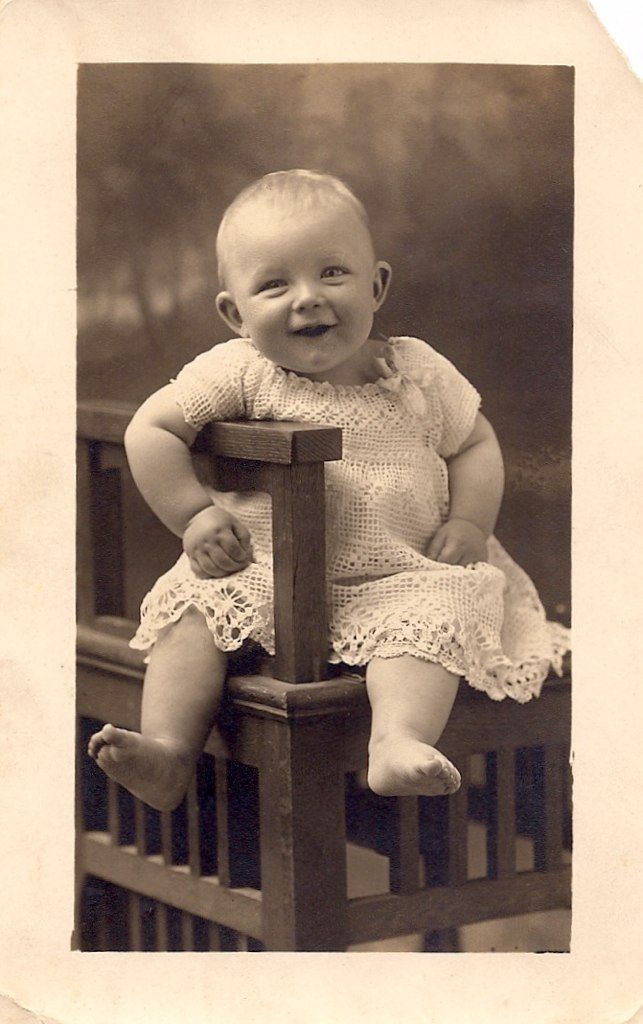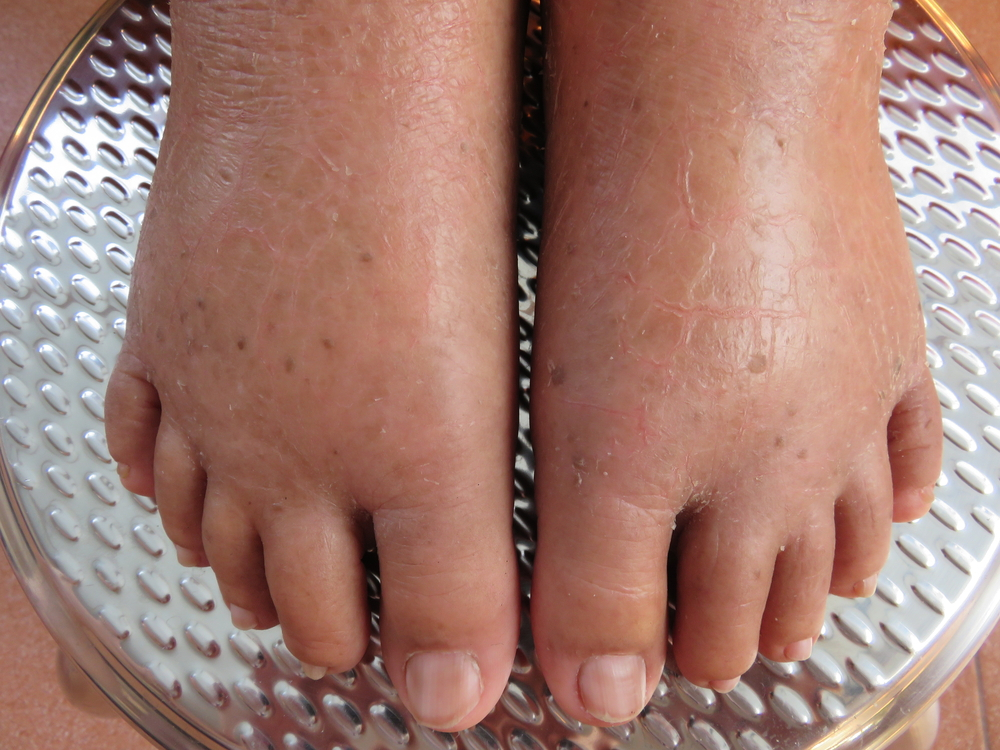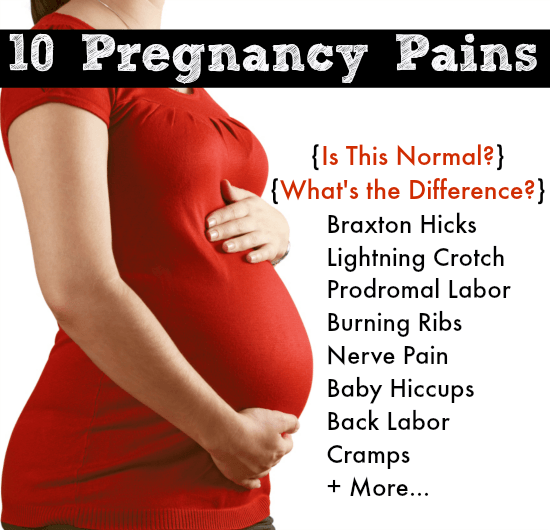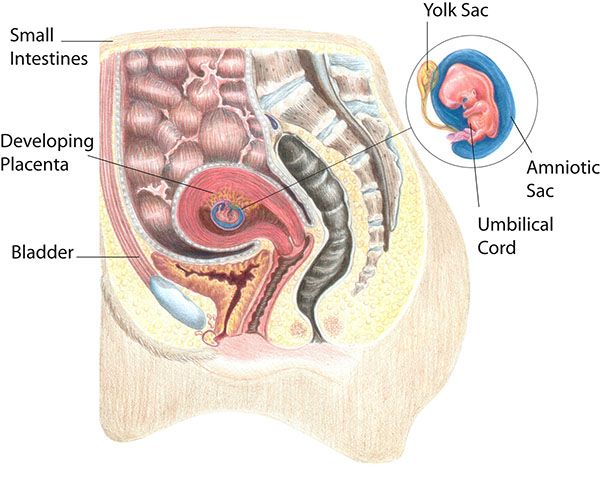My baby doesnt cry
Why Newborn Doesn’t Cry (Should You Be Worried?)
During your pregnancy, you might’ve heard about the importance of your baby’s first cry as they enter the world. However, not all babies cry, and this can be worrying to new parents.
We’re always told that during the first six months, all you’ll be doing is feeding, changing diapers, and soothing cries. So what does it mean when your newborn doesn’t cry? Should you be concerned or enjoy the peace and quiet few parents have?
You can find a lot of theories that less crying points to conditions such as autism, Down syndrome, or apnea. We’ll help ease your mind and make some sense of these newborn cries, or lack of them.
Table of Contents
- Why Newborns Cry
- Why Some Newborns Don’t Cry
- Reasons Why Some Babies Don’t Cry
- What a Crybaby
Why Newborns Cry
During delivery, your baby encounters hormonal changes that encourage them to take their first breath. This is usually when parents will hear their baby’s first cry.
Up until this point, your baby’s lungs were filled with fluid from the womb. As your baby breathes, the lungs expand, forcing the liquid out through the blood and lymph system (1).
The first breaths your newborn takes are likely to be irregular and shallow, but this is only for a moment. Soon they’ll become deeper and more regular, as they work to exchange oxygen for carbon dioxide. Next, blood will circulate the lungs.
Your baby’s first breaths are probably the hardest, which is why some need help. This is why you may see a nurse or neonatologist vigorously wiping the baby’s skin with a blanket or towel at birth. This stimulation encourages deep breathing and crying.
Generally, newborns will cry until they’re soothed, usually by being placed onto their mother’s chest. Following birth, your infant will cry whenever they need something, like feeding, a diaper change, or some attention. However, not all babies will cry — some cry significantly less.
A baby’s cry has an impact on many of the adults who hear it. Even if the baby isn’t yours, you may still feel somewhat distressed by the sound. Whenever we hear an infant cry, there’s something in our brain that makes it nearly impossible to ignore.
The effects of an infant’s cry aren’t as significant on non-parents as they are on parents. One study showed that when mothers hear their baby cry, it triggers an alarm, telling moms to care for them. In fathers, the cries caused more irritation than a need to provide care (2).
Either way, ignoring the cry isn’t easy.
Why Some Newborns Don’t Cry
At birth, most babies will cry due to the trauma of being born. If your labor was quick or you had a cesarean section, the hormonal changes might not have occurred.
Being heavily sedated can also affect your baby, too (3). If you receive pain medication, your unborn baby is likely to feel the effects as well, causing them to feel sleepy.
If you receive pain medication, your unborn baby is likely to feel the effects as well, causing them to feel sleepy.
In such cases, your newborn may need some help getting their lungs going. Doctors and nurses can encourage your baby to breathe by physical stimulation. This will clear their airways so they can breathe on their own.
Babies born through cesarean section will typically cough or yawn instead of crying. Still, not crying during birth raises alarms, which is why doctors will examine your baby to check for abnormalities.
A doctor performs an Apgar test to evaluate your baby immediately after birth, usually within the first minute. The Apgar test will determine how well your baby tolerated birth and how they adapt to the outside world. Your doctor will look at five criteria, giving each a score of zero, one, or two.
The criteria are:
- Breathing efforts.
- Heart rate.
- Muscle tone.
- Reflexes.
- Skin color.
If your newborn isn’t breathing, for instance, doctors will give a score of 0 in that category. If they’re breathing well, they score a two.
If they’re breathing well, they score a two.
After the initial Apgar test, another test is done five minutes post-birth to see how they’re adapting (4). If your baby’s score is low, doctors know to administer oxygen and will evaluate if further treatment is necessary.
Even with a low score at the first minute, most infants attain an expected score of 9 by five minutes after birth. Although the Apgar scoring system allows for a possible score of 10, infants are never given a score higher than 9. There is typically some residual cyanosis (blue color to the hands and feet), so 9 is always the maximum score given (meaning 1 for skin color). In other words, there is no need to worry about your baby not having a “perfect score of 10.” The AAP discusses variations in Apgar scores further.
Consult Your Doctor
Some babies will have a high t score and still not cry as much. If you have worries, you can always consult your baby’s pediatrician.
Reasons Why Some Babies Don’t Cry
Most babies have a natural crying instinct — they’re programmed to announce their arrival with a big “Waah. ” Since newborns can’t talk yet, crying is simply the best way for them to communicate.
” Since newborns can’t talk yet, crying is simply the best way for them to communicate.
Still, as long as your baby’s needs are met, there’s no issue with them not crying as much. Every baby is different — some might feel hungry or cold but aren’t able to express it by crying.
If your pediatrician has determined everything is fine with your newborn, they may simply still be learning how to cry. If so, you must discover other gestures your little one might use to let you know what they need.
Clinically, I find that the amount of crying varies with the temperament of the baby. This is best seen with twins; one twin may seem to cry and vocalize often, while the other is calm, quieter, and cries less.
Editor's Note:
Dr. Leah Alexander, MD, FAAP
This is also why it’s so tough for parents with babies who cry less. How do you know if their needs are met? It’s common to label a baby who cries less as an “easy baby” — but chances are it’s the opposite.
Here are some ways your newborn might communicate with you without crying (5):
1. Signs of Hunger
Crying isn’t the only way a baby signals their hunger — it’s typically their last resort (6). Once your baby begins to cry from hunger, it’s usually a violent, irritated cry as if they’re telling you off for ignoring the other cues. Here are some early hunger signals to look for:
- Turning their head toward your chest: Newborns will naturally seek their mother’s breast when hungry, even if you’re the dad. You can easily spot it when they open their mouths and turn toward you.
- Clicking tongue: Clicking or sucking the tongue is another early clue of hunger, along with licking lips. You may hear a sound similar to when they’re nursing.
- Hands in the mouth: Your baby may put their hands to their mouth when they’re feeling hungry.
2. Clues to Sleepiness
Knowing the signs of a sleepy baby isn’t always easy. Older babies may rub their eyes, yawn, or become irritable. However, newborns aren’t that advanced, and not all will rub their eyes.
Older babies may rub their eyes, yawn, or become irritable. However, newborns aren’t that advanced, and not all will rub their eyes.
Try to observe your little one’s fists. If they look closed and your baby has them near their face, it could be a clue. Your baby may also appear tense or paralyzed, yawn, or struggle to keep their eyes open.
It’s important that you respond to these signals as soon as possible. Not all newborns can lull themselves to sleep, and it can quickly escalate into a full-blown cry.
3. Needing a Diaper Change
Alright, so you may think this one is easy. However, because a newborn’s poop doesn’t have a distinct smell yet, it can be tricky (7). So, how can you tell when they’ve done the deed in their diaper?
Your baby might look uncomfortable, restless, or even irritated. Having a dirty diaper can make them cranky and moody.
If your little one falls asleep while wearing a soiled diaper, they may wake up suddenly. Another clue is if it’s been a while since the last diaper change — then it’s probably time to check.
What a Crybaby
When most of us think of babies, we instantly think of that constant cry every time they need something. Almost all babies are born with a natural crying instinct, designed to affect the adults around them. It’s a sound we associate with a healthy childbirth, an indicator that baby arrived well and is breathing.
So when your newborn doesn’t cry, it’s bound to raise some alarms. However, there are several reasons why some babies don’t cry. If the labor was quick, you had a cesarean section, or received pain medicine, then it can affect your baby. Nemour’s Hospital offers some additional tips, including when crying is excessive and abnormal.
If you have any worries, always consult your baby’s pediatrician.
Feedback: Was This Article Helpful?
Thank You For Your Feedback!
Thank You For Your Feedback!
What Did You Like?
What Went Wrong?
The Meaning and Implications if a Baby Doesn't Cry at Birth
Do All Babies Cry at Birth?
The first sign of life—and survival–is the sound of a newborn’s cry after birth.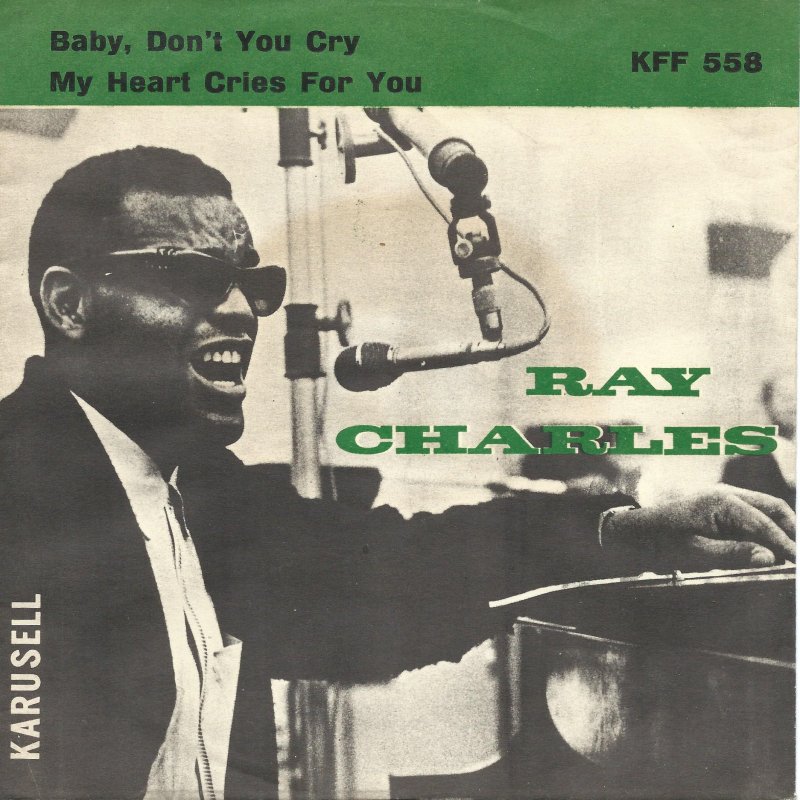 At least, that is what most believe is the anatomy of new life. And yet, not all newborns cry. A mother who does not hear her baby cry may worry that something is wrong, that the baby is not breathing or reacting appropriately to living outside of the womb. However, humans are complex beings, and newborns are no exception. If your child did not cry at birth, you and your medical team might be alarmed for a good reason. There may also be un-alarming reasons why your newborn’s after birth cry is delayed.
At least, that is what most believe is the anatomy of new life. And yet, not all newborns cry. A mother who does not hear her baby cry may worry that something is wrong, that the baby is not breathing or reacting appropriately to living outside of the womb. However, humans are complex beings, and newborns are no exception. If your child did not cry at birth, you and your medical team might be alarmed for a good reason. There may also be un-alarming reasons why your newborn’s after birth cry is delayed.
Importance of an After-Birth Cry
Crying involves the musculoskeletal and respiratory systems. The coordination of the face muscles, opening mouth, quivering chin, esophagus, bronchial tubes, and lungs that occur when a baby cries already begins in the womb, according to a study from the mid-2000s. At 20 to 28 weeks gestation, fetuses were able to cry after receiving sound and vibration stimulation through the mother’s belly. The facial grimace, breathing consistent with crying and frowning all indicated signs of crying without the sound. The research confirmed that stimulation to make the fetus uncomfortable causes crying.
The research confirmed that stimulation to make the fetus uncomfortable causes crying.
A baby’s first breath results from hormonal reactions that help empty the fluid from the lungs so that they can breathe air. The first breaths cause lung expansion and fluid expulsion into the circulatory and lymphatic systems. It takes a few breaths or more to regulate the oxygen and carbon dioxide and get the blood circulating through the lungs. The effort of those first few breaths is tremendous, and some newborns need help. As such, neonatal staff massage the skin to stimulate breathing. The vigorous skin rubbing can encourage crying.
Likewise, when newborns leave the warm womb to exit into the cold hospital room, they experience discomfort that causes them to cry in order to breathe and expel fluids. That’s why babies who are instantly placed on their mother’s belly may not cry since they are warm and content. So long as their heart rate is stable and breathing normally, newborns do not have to cry to show healthy adaptation to the new world. A baby’s quiet arrival may mean they do not know how to cry yet or other benign reasons for their silence. However, vigilant doctors do not assume that there is some negligible reason for a baby’s silence.
A baby’s quiet arrival may mean they do not know how to cry yet or other benign reasons for their silence. However, vigilant doctors do not assume that there is some negligible reason for a baby’s silence.
What if a Baby Doesn’t Cry when Born?
A baby who does not cry may alert the doctor to examine the baby for problems. Importantly, an investigation and Apgar testing right after birth measures breathing, heart rate, muscle performance, skin color, and reflexes. This can be significantly revealing and may indicate an underlying medical issue that needs urgent attention.
Potential Reasons for a Baby Not Crying at Birth
Short labor and C-section delivery may interfere with the hormonal shifts that begin the breathing transition. Thus, a baby may not cry at birth. In addition, the mother’s pain medication may cause the newborn to be sleepy at birth, so they may need help jumpstarting the lungs. Other reasons may be a long, exhausting labor and the after-effects of an umbilical cord wrapped around the fetus’s neck, causing oxygen deprivation. When a newborn’s Apgar score for breathing low, the doctor may wait a moment to see if the baby can breathe independently or with further stimulation. The optimal score is 9 or 10 after assessing at one minute, five, ten, and fifteen. However, after five minutes, a low breathing score requires a doctor to act.
When a newborn’s Apgar score for breathing low, the doctor may wait a moment to see if the baby can breathe independently or with further stimulation. The optimal score is 9 or 10 after assessing at one minute, five, ten, and fifteen. However, after five minutes, a low breathing score requires a doctor to act.
Babies who are breathing but do not cry are more likely to have some type of condition that threatens their survival. A baby may suffer from asphyxia or oxygen deprivation before, during, or after birth due to many causes. A low Apgar score of 3 or less at one and five minutes postpartum with poor muscle tone, respiratory problems, elevated acid levels in the cord blood, and bluish skin should raise the suspicion of oxygen depletion. In these situations, a baby whose breathing is not vital may need oxygen, but other than oxygen deprivation due to adjusting outside the womb, there are many potential reasons why a baby may not cry when born, some of which include serious congenital conditions and birth injuries.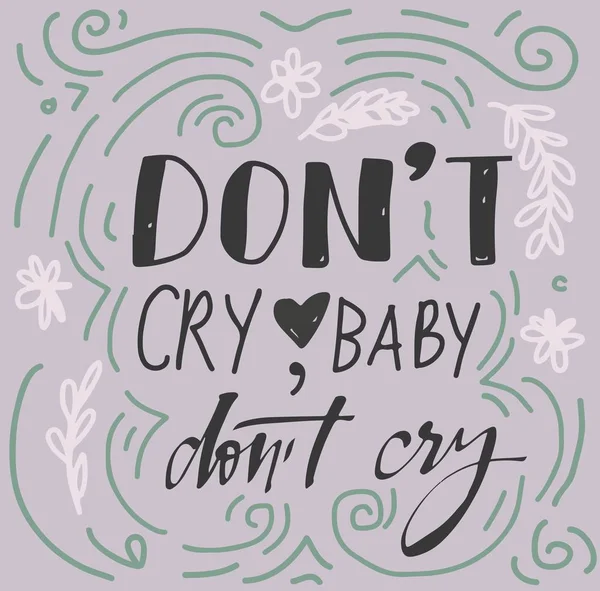
In other words, many reasons, both benign and malignant, exist for babies not crying at birth. Some require medical assistance to start their breathing, while others may cry after birth, and a delay does not necessarily mean trouble.
Responding to Causes for Concern if Your Baby Doesn’t Cry after Delivery
Most see the cry as a sign of working lungs. Thus, if the cry is not audible after birth, the medical team begins to encourage crying by eliminating any impediments like fluid or meconium that must be suctioned from the mouth and nose. Silence and other troubling signs should cause the medical team to act. The baby may need breathing assistance with a ventilator or may have other medical conditions obstructing breathing or other bodily functions. An abnormal fetal heart rate before or during labor with high acid levels in the blood could be the first clue.
Coupled with a mother with low blood pressure, a poor functioning placenta, overdue pregnancy, compressed umbilical cord, or a highly agitated uterus, a doctor may suspect fetal or neonatal asphyxia. A baby that does not cry after the warning signs of asphyxia should medical professionals to act immediately after registering a low Apgar score. Delayed diagnosis of or response to the condition could lead to brain damage or death. It’s also possible a silent baby is one with congenital disabilities. Premature babies also do not cry, typically, and these infants often have health conditions that require additional assistance from doctors, nurses, and medical professionals.
A baby that does not cry after the warning signs of asphyxia should medical professionals to act immediately after registering a low Apgar score. Delayed diagnosis of or response to the condition could lead to brain damage or death. It’s also possible a silent baby is one with congenital disabilities. Premature babies also do not cry, typically, and these infants often have health conditions that require additional assistance from doctors, nurses, and medical professionals.
Failing to Take Action to a Baby Not Crying may be Considered Medical Malpractice
All healthcare providers, especially doctors, must practice medicine competently, up to the appropriate standard required of them, given the circumstances. When other physicians would likely have known the signs and prepared for emergency delivery of a fetus in distress before the damage occurred or responded immediately to signs of a potential birth injury, your doctor’s choices and inaction may be considered medical malpractice. If your physician acted within reason given your pregnancy history, fetal development, and signs throughout labor and delivery, then even the best decisions may lead to poor childbirth outcomes through no one’s fault. This is why it is so important to have your case reviewed by an experienced birth injury lawyer who can investigate what happened in your case and identify possible negligence that may be reason for legal action.
If your physician acted within reason given your pregnancy history, fetal development, and signs throughout labor and delivery, then even the best decisions may lead to poor childbirth outcomes through no one’s fault. This is why it is so important to have your case reviewed by an experienced birth injury lawyer who can investigate what happened in your case and identify possible negligence that may be reason for legal action.
Investigate What Happened in Your Baby’s Birth and Know Your Options if they were Injured in New Jersey
Consulting with our seasoned team of New Jersey birth injury attorneys can be incredibly helpful for your peace of mind and your understanding of your rights and options. You deserve to know whether your doctor may have caused injury to your newborn at birth or neglected to prevent one. Our lawyers can help you determine malpractice, consulting with knowledgeable medical experts who can review your pregnancy, birth, and postpartum medical records and give their expert opinions about your doctor’s performance and decisions.
If you suspect your physician’s, nurses, or other healthcare providers’ responses to your newborn’s silence caused or failed to identify the source of an injury requiring urgent care, contact us today for a free legal consultation. You can reach us anytime at 866-708-8617 to discuss your baby’s birth and learn more about how we may be able to help.
Additional Resources:
- Kc A, Lawn JE, Zhou H, et al. Not Crying After Birth as a Predictor of Not Breathing. Pediatrics. 2020;145(6):e20192719. doi:10.1542/peds.2019-2719
- Gingras, J. L., Mitchell, E. A., & Grattan, K. E. (2005). Fetal homologue of infant crying. Archives of disease in childhood. Fetal and neonatal edition, 90(5), F415–F418. doi:10.1136/adc.2004.062257
Family Tree - Loss of attachment in a child under one year old
A healthy child with good attachment to his mother is calm.
He wakes up without tears and smiles. Normally, his attention is distributed evenly between his inner world and the environment.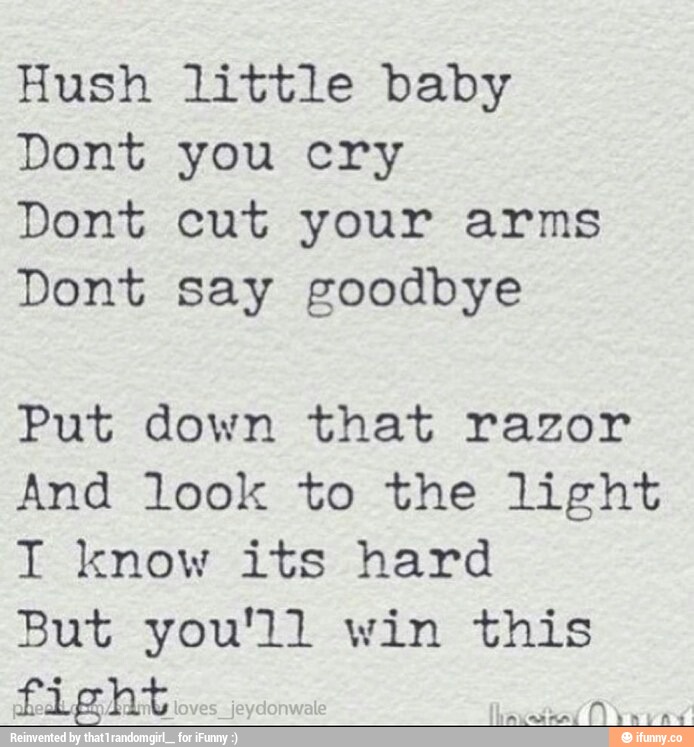 It looks like he is immersed in his own sensations from the body, mastering his involuntary movements and trying to repeat them arbitrarily when he lies alone.
It looks like he is immersed in his own sensations from the body, mastering his involuntary movements and trying to repeat them arbitrarily when he lies alone.
The child can lie alone in the crib for about 10-15 minutes and play with toys and himself, provided that he sees or hears his mother in the room.
When mother approaches, calmly turns her attention to her. His mother is his priority.
He sits comfortably in his arms and looks into his eyes. He smiles when he sees his mother's face, and repeats facial expressions. He does not need to be in his arms all the time he is awake.
Breastfeeding is completed within forty minutes, the child hardly sucks at the breast as a pacifier for comfort, except in situations when he is upset by what is happening outside.
The process of the disappearance of attachment sometimes starts imperceptibly. The first symptoms of mothers are often not noticed, taking these small shifts in behavior as the norm in infants.
The first stage is “Shifting attention outward”.
“There is something wrong with my mother. I’m not interested in taking care of myself, because I need to establish a connection with my mother, I can handle it!”
The baby's attention is focused on what is happening outside. He tracks his mother with his eyes and starts crying if he is not picked up right away. He can play for a long time only in the presence of his mother.
Prefers to be on hands all the time of wakefulness and sleep.
Wakes up, as a rule, crying, falls asleep longer and in arms, sensitively reacting with activation to attempts to put him in bed. He catches his mother's eye with his eyes and smiles when he succeeds.
The little man does not lose hope of restoring or establishing a connection. He uses creativity to draw attention to himself. Looking for ways to find or maintain contact, so breastfeeding takes longer. The child suckles for a long time and continues to look for the nipple after saturation, calming himself with sucking and rejoicing in contact with his mother. Sucks on a pacifier or fingers most of the time he is awake.
Sucks on a pacifier or fingers most of the time he is awake.
The second stage is "Constant crying".
“My mother never notices me! It's unbearable!"
If mother's attention is not obtained, affection disappears, and despair over her loss begins to shed tears. This is a situation of great stress for the baby when the mother ignores him. The child plays occasionally and for a very short time only with his mother. He sleeps poorly, sleeping in short intervals in his arms after crying. He wakes up for feeding and is in his arms for the entire period of wakefulness, constantly whimpers if they try to put him down.
Due to stress, digestion problems are added, because the gastrointestinal tract can work well only in a calm state.
By evening there may be severe colic and problems with stool. Feeding is nervous, the baby can be interrupted to cry, shake his head, pull the nipple, arch. Fall asleep on the chest 5-10 minutes after application.
Neurological symptoms join. The baby becomes uncomfortable in his arms. The fists are clenched, almost never smiles, rarely makes eye contact.
At this stage, as a rule, mothers take the child to a neurologist, and he finds hypertonicity and arousal syndrome, autonomic dysfunction syndrome, and so on. Pediatricians begin to treat colic with the exception of everything from the mother's diet and the rest of the list, up to dysbacteriosis.
Skin problems begin.
Mothers complain that they have a capricious restless baby. They try to bathe in salt or herbs, add a pool, relaxing massages. Continue to take care of the physical health of the child.
The third stage is Apathy.
"I didn't make it... I'm alone."
The loss of affection took place and wept. Stress becomes chronic. The child becomes quiet. He hardly makes eye contact. He withdraws into himself and stays there longer than outside. Reluctant to communicate. Slowly, he is interested in the world again. Plays with favorite familiar toys, it is difficult to accept new ones. Begins to slowly lag behind in development. At this stage, sleep and digestion can improve. Appetite can become excessive or, conversely, bad. The child can remain obedient and comfortable in appearance. Almost never smiles at adults.
Slowly, he is interested in the world again. Plays with favorite familiar toys, it is difficult to accept new ones. Begins to slowly lag behind in development. At this stage, sleep and digestion can improve. Appetite can become excessive or, conversely, bad. The child can remain obedient and comfortable in appearance. Almost never smiles at adults.
Skin problems also go away, but sometimes they get worse. This is a child "with a weak battery" - he gets tired quickly, often overworks, cries in his sleep.
How to stop the loss of attachment?
Imagine that you came on a date and you were certainly welcome. You want to get to know each other better. You are calm and smiling at your partner. He shows his concern for you: he brings you to a restaurant and orders food for you, you are happy, but he does not look at you and does not listen, but looks at the phone. You call him, he looks up, calls the waiter and says: “Bring her some more food” / “Show her where the restroom is” / “Turn up the air conditioner, she will catch a cold . ..” And goes back to the phone.
..” And goes back to the phone.
You are furious! You loudly insist on the return of attention, but in this case, he calls his psychotherapist, and then a neurologist and consults in front of you how to help you. You are soon brought a sedative and begin to massage against your will. After that, you understand that the partner is not going to communicate with you, get up, take your purse and leave. This man is forever out of trust.
The situation is aggravated if you still love this person very much and cannot go anywhere…
You are in a small body that does not obey you, you do not know how to talk about yourself. You are dependent on care, but it is desperately not enough for peace and happiness. Happiness to be understood by a loved one.
The plot for a horror movie, do you agree?
The root of the problem lies in the quality of the attention given. If the mother avoids communication with the child for some reason of her own and pays attention, for example, only to his physical parameters: weight, height, amount of food and stool color, skills, etc. , the attachment slowly disappears.
, the attachment slowly disappears.
It is very important for a child that you are interested in communicating with him. So that you look into his eyes, rejoice at him, stroke, kiss, understand and listen to reactions to the world. They talked about everything, even though he can’t answer yet.
Euromed Clinic pediatric neurologist answers questions
A neurologist is one of the main specialists for children from birth. For the first time, your baby meets with a pediatric neurologist while still in the maternity hospital, then scheduled examinations by this doctor are carried out every month, at three, at half a year, at 9months (if indicated), per year. We talked with the pediatric neurologist of EuroMed Clinic Natalia Petrovna Isaenko about why a child is shown to a specialist so often, what are the most common neurological diseases in babies, and what needs to be done to ensure that your child grows up healthy and calm.
— Natalya Petrovna, what does a neurologist pay attention to during routine examinations of babies?
- First of all, the neurologist reveals gross congenital anomalies. Next, we look at how the pre-speech, motor, emotional development of the child goes.
Next, we look at how the pre-speech, motor, emotional development of the child goes.
In each age period, the child should have certain skills. Parents, unlike a neurologist, most often cannot objectively assess how the development of their child fits into age norms.
- But after all, all children are different, and their development may not correspond to the tables and the established framework?
— Yes, it happens. Here it is necessary to approach very individually. Indeed, despite the fact that we are guided by existing norms, we have certain tables, painted schemes of what a child should do at what age, there is a possibility of deviations from them, and this is not scary. Some child may begin to perform certain actions a little earlier, some - a little later. Much depends on the conditions in which the child lives, what parents do in relation to the child, etc.
But that is why it is important to consult a neurologist in order to professionally assess whether the child is developing normally or there are frightening moments that may indicate certain health problems.
Is it normal for a small child to cry often?
- Recently, it is believed that a healthy child, when he is full, who has enough day and night sleep, should not cry. If the child cries often and for no reason, then there is a problem. These can be headaches, neck problems (subluxations, infringement), neurological problems. In the first months of life - problems with the gastrointestinal tract: colic, increased gas formation, etc. In connection with this, there may be crying during meals, refusal of the breast, of the bottle. During eating, intestinal motility increases, and therefore the child experiences discomfort.
Young children are usually very weather dependent and react to the weather - this can also be a reason for crying.
It seems to me that many children cry because they are bored, they require parental attention so much. Now there is a psychological acceleration in children and, accordingly, they need more attention. This is usually clearly visible. Many parents themselves provoke this fixation: the child began to cry, the mother took him in her arms, shook him, put him to her chest. Of course, the baby in his mother's arms and, moreover, at the breast is fine, and he will repeat crying, demanding repetition. It is not necessary to apply it to the chest every time the child has cried. It is better to try to switch: distract, rattle a rattle, stroke ...
Many parents themselves provoke this fixation: the child began to cry, the mother took him in her arms, shook him, put him to her chest. Of course, the baby in his mother's arms and, moreover, at the breast is fine, and he will repeat crying, demanding repetition. It is not necessary to apply it to the chest every time the child has cried. It is better to try to switch: distract, rattle a rattle, stroke ...
Another reason for crying is overwork. Parents often do not believe that the baby can overwork, they do not understand why. Babies have an immature nervous system, plus they receive a huge amount of new information and impressions every day - for them, everything in the world is new and unfamiliar! Therefore, a good sleep is so important, when the child can take a break from impressions.
If the child screams before going to bed, sleeps little, nervously, often wakes up, it is necessary to move the mode, improve sleep, monitor the quality of sleep.
- When we talk about a full sleep, what do we mean, how should a child sleep?
- For very young children, the norm is to sleep for at least an hour and a half on daytime sleep, six hours in a row - at night. During the adaptation period, in the first months of life, the baby may wake up at night more often, but still, the intervals should be at least 3 hours. Sleeping for 30-40 minutes is not enough, the child does not have enough time to rest. Here such a moment is important: the phase of sleep in a child is just these 30-40 minutes. But the child must be able to move from phase to phase independently. What happens in practice? The child was brought in, opened his eyes, his mother immediately takes him in her arms, begins to feed him. He gets used to it and no longer falls asleep on his own. Therefore, it is important to teach the child to move from phase to phase without waking up: do not touch him if he wakes up, do not disturb him; if he cried, was capricious - pump him up, stroke him, but try so that the child continues to sleep without a break for food.
During the adaptation period, in the first months of life, the baby may wake up at night more often, but still, the intervals should be at least 3 hours. Sleeping for 30-40 minutes is not enough, the child does not have enough time to rest. Here such a moment is important: the phase of sleep in a child is just these 30-40 minutes. But the child must be able to move from phase to phase independently. What happens in practice? The child was brought in, opened his eyes, his mother immediately takes him in her arms, begins to feed him. He gets used to it and no longer falls asleep on his own. Therefore, it is important to teach the child to move from phase to phase without waking up: do not touch him if he wakes up, do not disturb him; if he cried, was capricious - pump him up, stroke him, but try so that the child continues to sleep without a break for food.
Older children who sleep once a day should have 2-3 hours of naps during the day. If you sleep more, that's good.
To improve sleep, the regime is important. I recommend directly writing down in a notebook (or in an application on a smartphone) how much the child sleeps, the time when he fell asleep and woke up, when he screams before going to bed, what his mood is after sleep ... So we can track the quantity and quality of sleep. Look at what days the child slept well, fell asleep easily - and focus on the daily routine.
I recommend directly writing down in a notebook (or in an application on a smartphone) how much the child sleeps, the time when he fell asleep and woke up, when he screams before going to bed, what his mood is after sleep ... So we can track the quantity and quality of sleep. Look at what days the child slept well, fell asleep easily - and focus on the daily routine.
- One of the most common diagnoses that many children are given in the hospital is "neurogenic torticollis." How serious is this problem?
- Neurogenic torticollis - asymmetry of muscle tone. A child is often born with asymmetric muscle tone. A small child does not yet have voluntary movements, they are chaotic. And at the moment of relaxation, sleep, the child is drawn to where the tone is increased. That is, the child lies with a certain turn of the head. If you do not deal with this problem, do not correct it, there is a deformation of the neck and skull. The child constantly looks in one direction, lies on one side, as a result, the head flattens, its shape changes.
You can work with this, the main thing is to do it. What is being done to correct torticollis and its consequences? We change position, we shift the child so that he lies on different sides alternately, and not on one, on his back. Lay on the stomach. Also, therapeutic exercises, massage, swimming pool are recommended for the correction of torticollis.
Torticollis returns to normal between 3 and 6 months of a child's life. During this period, the child becomes more active, turns his head, arms, begins to roll over, tries to crawl, sit down.
It is important not to confuse neurogenic torticollis, which is treated by neurologists, with congenital muscular torticollis, a gross pathology treated by orthopedic doctors.
Is headaches in children a reason to visit a neurologist?
Yes, definitely. Children under 5-6 years of age should not have headaches - they are not yet ripe for this. In young children, headaches can be caused by somatic causes: parasitosis, anemia, allergies, some problems from the gastrointestinal tract . ..
..
In older children, headaches can be triggered by problems with the spine of the neck. In the pubertal period, various autonomic dysfunctions are often encountered. This is a common problem in teenagers.
In any case, it is necessary to be examined. There is a good chance that we will not find anything, and the headaches will eventually go away on their own. But it can be a symptom of some serious diseases that should not be left to chance.
Is nocturnal enuresis (urinary incontinence) common? When do we talk about this diagnosis?
Yes, this is also a common disease. As a diagnosis, enuresis is made after 3-4 years.
If we talk about the norms in development, by the age of one and a half years the child should learn not to urinate at night. A modern child spends some time in disposable diapers. Then they are removed. The first time of the night will be "wet". But by the age of two, “dry nights” should already be formed.
After that, some time passes - and the child begins to urinate again at night, say, at 4 years old. This is secondary enuresis.
This is secondary enuresis.
If the diaper is removed, and the child continues to urinate at night, this is primary enuresis.
There are many reasons for enuresis: these are infectious diseases, malformations, dysfunction of the genitourinary system, immaturity of the nervous system, stress, neurosis, etc. In any case, this problem cannot be ignored, but you need to contact a neurologist as soon as possible for correction this disease.
- Young children have convulsions when the temperature rises. How dangerous is it?
Febrile convulsions (that is, convulsions with an increase in body temperature) is a paradoxical reaction of the nervous system, the cerebral cortex to such an irritant as high temperature. Against this background, there is a splash. Febrile seizures may occur only once, or they may recur with each episode of fever. Most often, they occur in emotional and active children. Special treatment is not required, the main thing is not to allow the body temperature to rise above 37.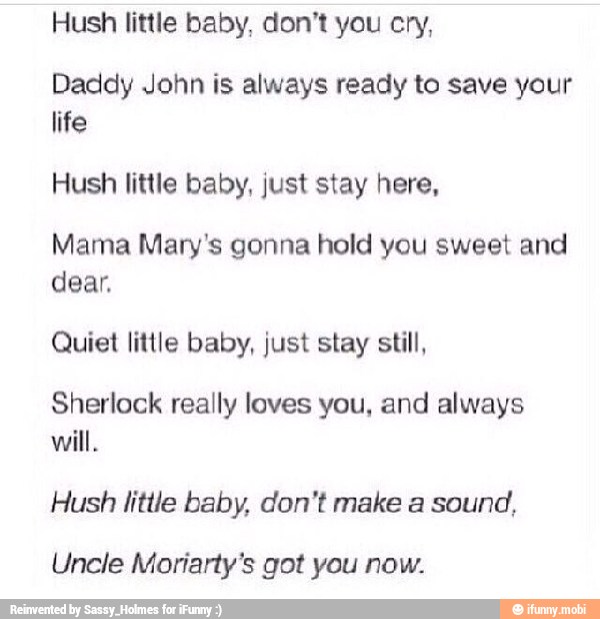 5 ° C, to bring it down immediately with antipyretic drugs so that episodes of convulsions do not recur. If necessary, the neurologist will recommend sedatives. Such children are observed by a neurologist, it is recommended to see a doctor every six months.
5 ° C, to bring it down immediately with antipyretic drugs so that episodes of convulsions do not recur. If necessary, the neurologist will recommend sedatives. Such children are observed by a neurologist, it is recommended to see a doctor every six months.
- Can't febrile convulsions be a sign of incipient epilepsy?
As a rule, febrile convulsions do not have a way out into epilepsy. There are isolated cases when convulsions can really be the debut of epilepsy. Therefore, in any case, it is necessary to show the child to a neurologist so that the doctor can see in which direction it develops.
Is epilepsy generally common?
Yes, epilepsy is a common disease. We, in Novosibirsk, even have a special center where epileptologists work - this is a very narrow specialization in neurology. When we confirm epilepsy in a child, I usually refer the patient to an observation center. So there they will be able to help the baby as efficiently as possible, correctly select the drugs and prescribe the correct treatment.
What symptoms should parents pay attention to in order not to miss the onset of epilepsy in a child?
- As a rule, when an attack occurs, it is clearly visible. The child has convulsive twitches, the corner of the mouth twitches, the muscles may pull, saliva flows, foam may come from the mouth, he may urinate. But it happens that a child simply freezes during an attack, and, for example, rubs his hands or makes chewing movements for some time. And then everything passes. After an attack, headache, nausea, impaired coordination and speech can be observed.
Sometimes the first signs of epilepsy appear even before the attack. For example, a child twitches while sleeping. Or he simply changes his usual behavior, becomes obsessive, whiny, asks the same questions in a circle, etc. This is due to the neurological changes that occur with epilepsy.
Thus, if you notice changes in the child's behavior, he behaves unusually, strangely, be sure to show the child to a neurologist!
If possible, I recommend filming the attack on video - it will be much easier for the doctor to understand what is happening with the child.
- Are there sedatives that can be given to children?
- Hardly ever. Available drugs can be prescribed and given only in hospitals. This is not practiced in outpatient treatment in neurological pediatrics.
With increased excitability and emotionality of the child, I usually suggest starting from afar - to establish a daily routine, give the child the opportunity to actively move and fully relax, walk in the fresh air, etc.
All drugs (vascular, nootropics, etc.) are prescribed strictly according to indications and cannot be taken without a doctor's recommendation. The consequences of uncontrolled medication may be neurological and behavioral problems in the future: hyperactivity, disinhibition, restlessness, attention deficit hyperactivity disorder (ADHD).
How common is attention deficit hyperactivity disorder (ADHD) in children?
Now this diagnosis is made very often. Although, it seems to me, we often attribute to ADHD what it is not: the characteristics of the temperament and character of the child, his activity or even pedagogical neglect . ..
..
There are many pathological hyperactivity, but there are still more stories with problems in the family and in the interaction of parents with the child.
— Another common disease is nervous tics. How are they treated?
Yes, tics are very common. We treat both with medication, and - most importantly - with the normalization of the regimen. For a "ticking" child, a good sleep, rest, minimizing the TV, phone, computer is very important. It is very useful to send such children to sports clubs. As a rule, children suffering from a nervous tic are very emotional, temperamental, read a lot and sit at the computer. They are emotionally and informationally overloaded. And the nervous system relieves tension, manifesting itself in tics.
— Speaking of information overload, how do you feel about early development, which is so popular now?
- Badly. Any neurologist, I think, will agree with me. If a child is given a load that is inadequate for his age and development, this can result in quite serious problems in the future, up to psychiatric disorders. A child does not need all this early reading from two years old, English from three and mathematics from five. The child should calmly explore the world, it is important to stimulate his cognitive activity, but do not stuff him with a huge amount of knowledge beyond his age.
A child does not need all this early reading from two years old, English from three and mathematics from five. The child should calmly explore the world, it is important to stimulate his cognitive activity, but do not stuff him with a huge amount of knowledge beyond his age.
— What are the examinations for the diagnosis of neurological diseases?
- Electroencephalogram (EEG). Invented and created to record epi-activity - to confirm or exclude epilepsy, this is the main focus of this examination.
I also refer children with speech and mental disorders to the EEG to see how all cortical rhythms are formed - by age or not. This is corrected by age, over time. Classes with neuropsychologists, defectologists, the Tomatis method (a program for neuro-sensory stimulation) also help.
Magnetic resonance imaging (MRI). This is one of the most informative surveys.
Be sure to send for an MRI to understand the cause of headaches, especially if the child complains of a headache when moving, when he starts to jump, run, move actively.
Also, MRI is informative in epilepsy, the attacks of which are not treatable. Then we look at the MRI to see if there is a vascular malformation (deviation from normal development) or another vascular defect. This can cause seizures, and the problem is solved surgically. As a rule, after the operation, the seizures in the child stop.
MRI allows you to see the structure of the brain and blood vessels, assess the state of the structure, the presence of cysts, etc.
Computed tomography (CT). Typically, a CT scan is ordered after an injury to look for blood in the injured area.
Ultrasound of the vessels of the neck. Headaches, disinhibition, attention deficit, speech delays can be caused by impaired blood flow through the vessels. Ultrasound allows you to diagnose this, as well as to see anatomical defects (C-shaped, S-shaped course of vessels), anatomically incorrectly formed vessels, improper discharge of vessels into the spinal column, vasoconstriction.


